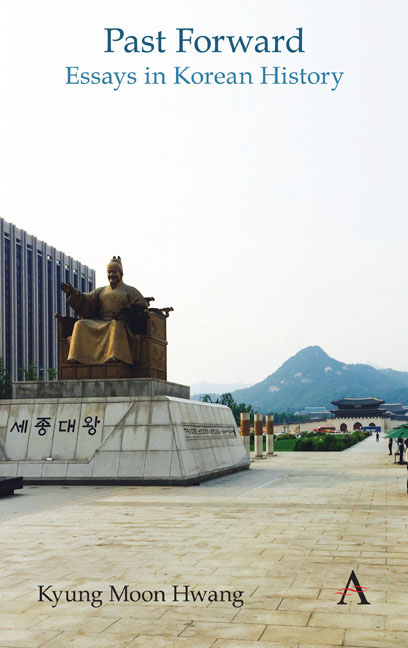Book contents
- Frontmatter
- Contents
- List of Figures
- Foreword
- Chronologies of Korean History
- Themes
- Acknowledgments
- Note on Romanization and Spelling
- Part I Circulating History
- Part II Durable Traditions
- Part III Ancient Remains
- Part IV Dynastic Depths
- Part V Modern Origins
- Part VI Challenges of Nationhood
- Part VII History Makers
- Part VIII External Presences
- Part IX Trials of Modernization
- Part X Gripped by the Past
- 70 Natural Disasters and the False Wisdom of the Past
- 71 Royal Dangers
- 72 North Korea's Alternative History
- 73 Origins of Korea's Political Corruption
- 74 Anti-Communism's Powerful Hold
- 75 Fraudulent Captains of the Sewol Ferry Disaster
- 76 Overcoming Past Hierarchies
- 77 Gripped by the Authoritarian Mindset
- 78 Ways of Living History
- Index
72 - North Korea's Alternative History
from Part X - Gripped by the Past
- Frontmatter
- Contents
- List of Figures
- Foreword
- Chronologies of Korean History
- Themes
- Acknowledgments
- Note on Romanization and Spelling
- Part I Circulating History
- Part II Durable Traditions
- Part III Ancient Remains
- Part IV Dynastic Depths
- Part V Modern Origins
- Part VI Challenges of Nationhood
- Part VII History Makers
- Part VIII External Presences
- Part IX Trials of Modernization
- Part X Gripped by the Past
- 70 Natural Disasters and the False Wisdom of the Past
- 71 Royal Dangers
- 72 North Korea's Alternative History
- 73 Origins of Korea's Political Corruption
- 74 Anti-Communism's Powerful Hold
- 75 Fraudulent Captains of the Sewol Ferry Disaster
- 76 Overcoming Past Hierarchies
- 77 Gripped by the Authoritarian Mindset
- 78 Ways of Living History
- Index
Summary
Concern and fascination, mixed with some gallows humor, characterized the popular reaction to the 2017 poisoning of Kim Jong-nam, the older halfbrother of North Korean leader Kim Jong-Un. To observers familiar with the bizarre North Korean transplantation of very traditional behavior into a modern authoritarian state, this made some sense. Still, the killing of an exiled potential claimant to the throne, which happened occasionally in Korea's dynastic past, seems to have come straight out of a movie or television drama.
The more fitting genre is probably the dystopian novel, especially George Orwell's “1984,” originally published in the 1940s. Orwell's work surged in popularity in the United States more recently in conjunction with the rise of would-be autocrat Donald Trump. No place, however, has replicated the horrific world of totalitarianism, in which every corner of life lies open to surveillance and control by the mechanisms of dictatorship, more than North Korea. And it starts with the Orwellian Big Brother, whose absolute authority justifies and determines every form of cultural, political, social, even familial interaction.
North Korea is now under the reign of its third Big Brother, but he is also the grandson of the original and the son of the successor. This hereditary feature of the strongman system shows that the monarchy has been revived in North Korea, but we should not assume that this country was somehow destined to repeat age-old Korean historical patterns. Indeed the basis of its founding was completely foreign, namely the Allied powers’ defeat of Japan in World War II and the postliberation occupation of Korea's northern half by the Soviet Union in 1945. The Soviets did not have to pick Kim Il-Sung as their native leader, but Kim was a reliable communist and had become known to some as an anti-Japanese guerrilla leader from the late 1930s. So this necessary connection to the resistance against colonial rule somewhat limited the Soviets’ choices.
Thereafter, Kim Il-Sung chose to solidify his power through ruthless purges, military adventurism (the Korean War), and a hyper-nationalist legitimization narrative based on patently inflated claims about himself. This came straight out of the modern dictator's playbook circulating around the world, but it did not necessarily have to turn out this way.
- Type
- Chapter
- Information
- Past ForwardEssays in Korean History, pp. 208 - 210Publisher: Anthem PressPrint publication year: 2019



